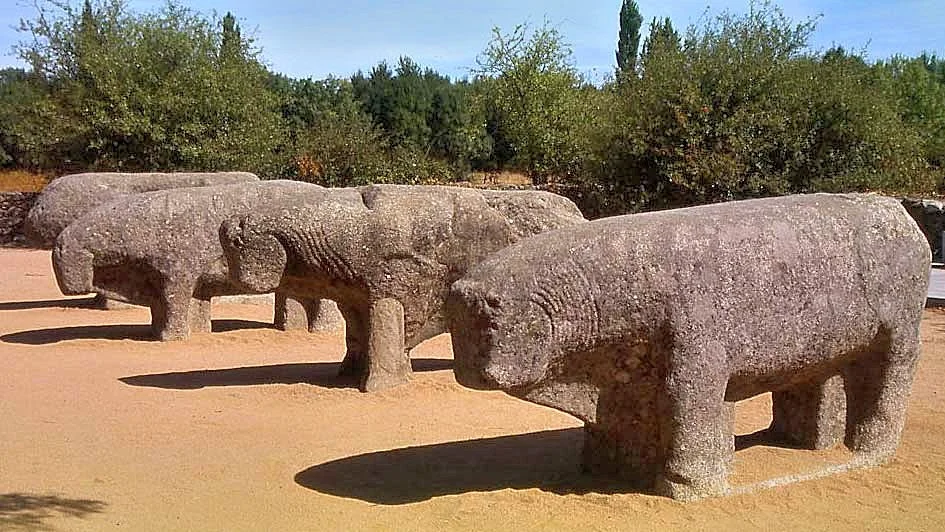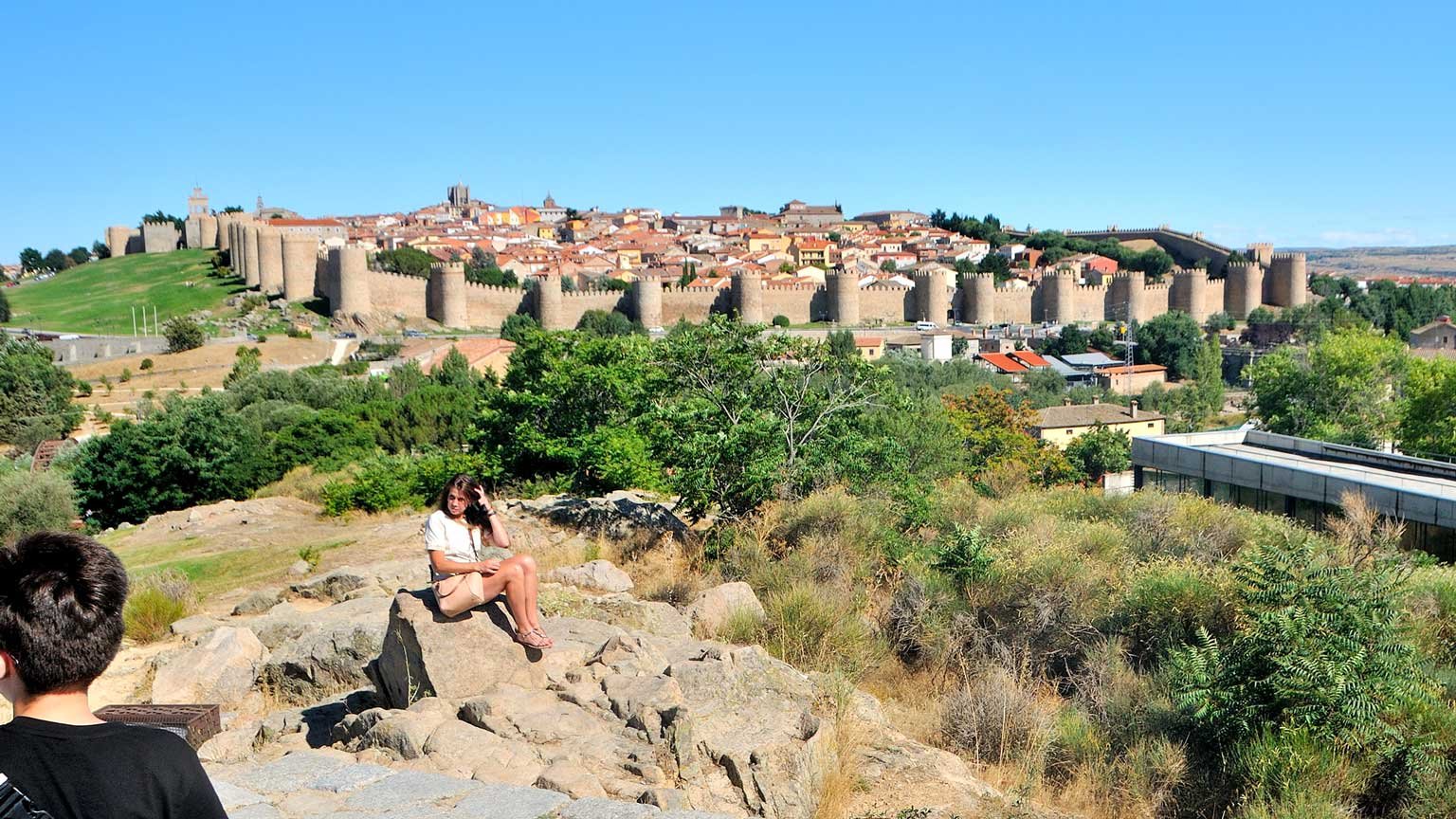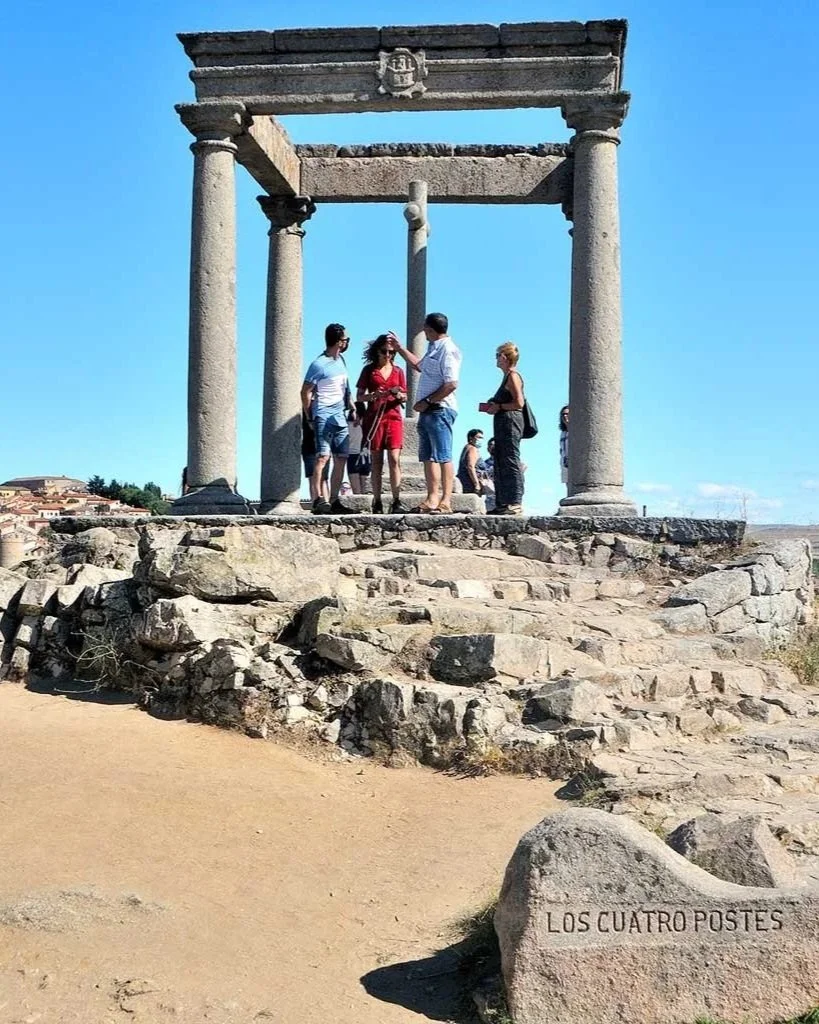Day 2 Ciudad Real to Avila
Travel in Stylr Day 2
Ciudad Real to Avila via Orgaz Village-Maqueda Castle-and a few more castles-El Descanso lunch-Avila
After a good night’s sleep at the hotel Santa Cecilia. We took a morning walk. Leaving Ciudad Real, after 30-35 minutes drive we arrived to Fuente el Fresno village, and drive on until a left bend in the road, and within 50 meters on your right hand side, look for the wall signed wall “Queso” (Good opportunity to buy Manchego Cheese) This is a shop as well as a restaurant. Worth a visit. Parking outside.
Orgaz Village
is situated in the eastern foothills of Montes de Toledo. We ejoyed a stroll around the village looked at Orgaz Castle from the 14th Century. We viewed the church of St Thomas the Apostle from a distance. After the short sightseeing walk we sat down at a local taverna, located along the main road, parking space available.
The Burial of the Count of Orgaz El Entierro del Conde de Orgaz is a 1586 painting by El Greco, More here Destino Toledo.
mage by Destino Toledo
If there is a work by El Greco that stands out from the others in Toledo, it must be El Entierro del Señor de Orgaz or El entierro del Conde Orgaz, as it is popularly and erroneously known. We find it in the church of Santo Tomé, in one of the essential neighborhoods in any visit to Toledo…
Leavin Orgaz and back on the road N-401
There is a risk that the surrounding flat (plateau) farming countryside with hillsides in the distance could be a bit boring, it looks the same for miles., and then suddenly another castle appear on the hillside.
Maqueda Castle with original battlements, the castle is located in the extreme part of the ancient wall of Maqueda. The bailey and the arrow holes are well conserved, which allows us to get a clear idea of how its defense was organized. Only outside visits are available.
Text from Turismo Castilla La Mancha
Back on the road, after approx. 15-16km another impressive cattle ruin appear in the near road distance its castle Palace of Escalona (Mudejar Palace) located in the Toledo region in the town of Escalona. We did not stop due to heavy traffic.
We are now on road N 403,
drive through Almorox village and just beyond the village the sceneray changes when you enter the large pineforrest of Pinar de Almorox. Within 20km from Almorox village we will enter the town of San Martin de Valdeiglesias and of course, another castle, Castillo de la Coracera. This one is of uncertain origin. According to the official version, the
Castle of the Coracera was built by Don Álvaro de Luna, valid for King Juan II, father of Enrique IV and his sister Isabel, future queen of Castile, in the 15th century. You can visit, and you can rent space for function etc…
We did a surprise visit to the Bulls of Guisando
Toros de Guisando A few kilometers outside San Martin de Valdeiglesias on road N-403, there is a signpost to the four stone bull statues.
The Bulls of Guisando are attributed to the Vettones and date back to the 3rd century BC. They consist of four granite sculptures representing four-footed animals, believed to be bulls or boars, and are considered to have a magic-religious function to aid fertility or protect livestock. An alternative theory is that they were used to mark the boundaries of pastureland.
Text from Turismo Castilla y Leon
Back on the road N-403
Just before KM96 we can start to see Embalse del Charco del Cora (Charco del Cura Reservoir). and within a short distance we could see and follow the Embalse de El Burguillo (El Burguillo Reservoir) beutiful views, with high mountainside surrounded the reservoirs. Some areas here have been developed to cater for holiday makers and weekenders most likely from the Madrid area.
Lunch time
We decided to stop at a bar/restaurant named El Descanso located along the roadside (left side) in the spread out village of Barraco.
The place was packed. We had to wait to be seated.
Great service, very friendly staff, We choose Menu of the day for a tenner. Excellent value for money . Starter, main course, dessert and we paid extra for the beer in the bar. The place was humming. We really enjoyed El Descanso. El Descanso facebook page.
Back on road again N-403
We are now heading straight on to Avila. Approximately 40 minutes (less than 37km) left to drive from El Descanso. The last 20km flat surrounding terrain, very few trees, mostly shrubbs. Slightly downwards and we can just see Avila in front of us.
Avila
Avila is the highest provincial capital in Spain, (Avila province) on just over 1,130 meters. In the winter time some access road can be blocked with snow and the temperature can fell well below 0 degrees C.
Distinctly known by its medieval walls, Ávila is sometimes called the Town of Stones and Saints.
It has complete and prominent medieval town walls, built in the Romanesque style; writer José Martínez Ruiz, in his book El alma castellana ("The Castilian Soul"), described it as "perhaps the most 16th-century town in Spain".
The town is also known as Ávila de los Caballeros, (Avila of the Knights), Ávila del Rey (Avila of the King) and Ávila de los Leales (Avila of the loyal ones) each of these epithets being present in the town standard.
Orson Welles once named Ávila as the place in which he would most desire to live, calling it a "strange, tragic place" Various scenes of his 1965 film Chimes at Midnight were filmed in the town.
Ávila was declared a UNESCO World Heritage Site in 1985. The site originally consisted of the walled city and four extra muros churches. The number of churches included in the site has since been increased.
Los Quatro Postes - The Four Posts
We stayed in Sercotel Hotel Quatro Postes outside the medieval walls of Avila. Easy parking outside the hotel, no problems to park the Maserati here.
Nice hotel, good size rooms, friendly reception staff. We did not use any extra facilities on offer. They have rooms with views towards Avila medieval wall.
Walking distance to town. On our way we stopped at the Four posts, actually it is a religious monument, however it has more of a Mirador useage with a terrific view of part of the finest preserved medieval walls in Europe, over 2km long, constructed in the 11th Century.
We walked down the hill, crossed over Rio Adaja on the bridge (walked next to the traffic) and enter the impressive medieval walls at Puerto de la Adaja.
Walk Medieval wall
Well inside the medieval wall, we decided to walk the wall for approx. half km, exit Puerta del Carmen. You walk slightly uphill all the time, great views.
We strolled around in the wall city, having some refreshment and tapas at one of several bars-cafes-restaurants around the historical pedestrian square of Plaza Mercado Chico, (the small market place) also named Plaza Mayor, surrounded by arcades. You will also find Avila’s the town Hall here. The square is one of the meeting points in Avila.
We walked down towards Puerto del Alcazar one of the nine gateways. Outside we walked onto Plaza Mercado del Grande and at the opposite end the church of San Pedro Apostol built in a Romanesque Gothic style.
Plaza Mercado del Grande
When we arrived close to 21:00 it was a busy, however we managed to get seats and for the next 2 hours or more we enjoy people watching with help of tasty tapas and local wine. Back to our hotel before midnight, a good night sleep before we meet up in the morning and our next days journey to Segovia.










